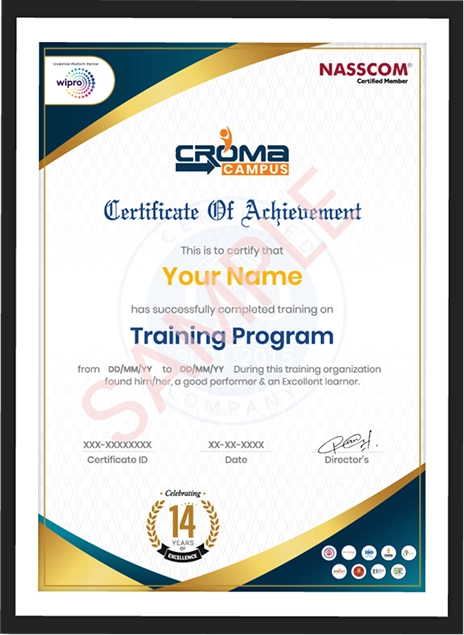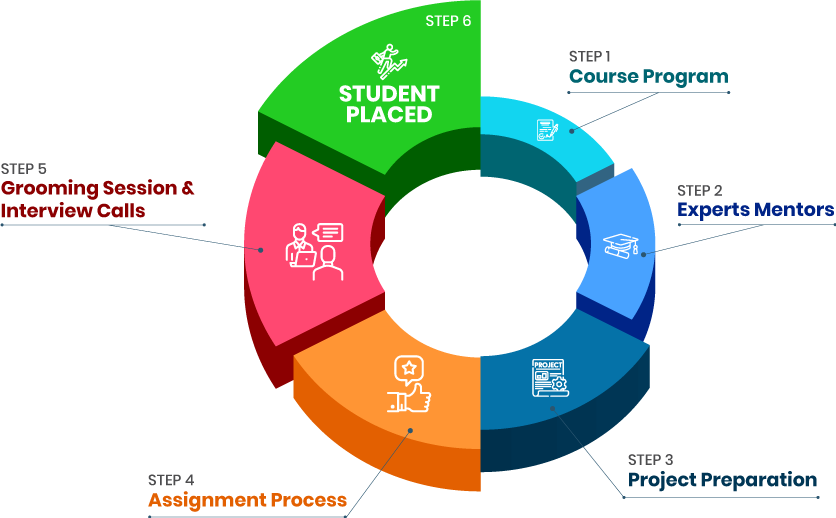Course Design By
Nasscom & Wipro
Build AI: Develop AI capabilities in people to create and develop AI solutions.
Enhance career opportunities: This will lead to the improvement of career opportunities and the creation of new employment opportunities in the AI industry.
Become innovative: Allow people to become innovators and promote growth in their organisations with the help of AI.
Machine learning: Machine learning is introduced as core concepts of machine learning, such as supervised and unsupervised learning, regression, classification and clustering.
Deep learning: You will be introduced to the concept of deep learning, such as neural networks, convolutional neural networks, and recurrent neural networks.
Natural language processing: You will be taught to handle and evaluate such text information such as sentiment analysis, topic models and language translation.
Computer vision: You will understand how to develop, and design computer vision systems that are capable of, image classification, object detection and segmentation.
Minimum programming knowledge: You are supposed to know about programming languages such as Python, Java, or C++.
Capturing ground in mathematics: You are expected to possess good mathematics skills, which entail linear algebra, calculus and probability.
Data analysis experience: You are expected to have experience data and data analysis packages such as pandas, NumPy and Matplotlib.
Students: The individuals who are studying computer science or engineering or their related study.
Working professionals: The individuals who desire to join the fields of AI or upgrade their AI practices.
Entrepreneurs: Business people willing to use AI to increase their innovation and startups.
Mean salary: 5-7 lakhs minimum salary per year as a fresher in AI.
Salary improvement: The salary can grow considerably with more experience and skills you acquire in AI.
Artificial Intelligence engineer: Machine learning models or Deep learning systems AI solutions: Design and develop artificial intelligence solutions.
Data scientist: A Data scientist has to analyze and interpret complicated information to base business decisions and promote growth.
Research scientist: Carry out AI and related research, publish papers and make new AI algorithms.
Artificial Intelligence engineer: Machine learning models or Deep learning systems, AI solutions. Design and develop artificial intelligence solutions.
Data scientist: A Data scientist has to analyze and interpret complicated information to base business decisions and promote growth.
Research scientist: Carry out the AI and related research, publish papers and make new AI algorithms.
Design and development: Develop and design AI, including machine learning models and deep learning systems.
Data analysis: Translate and identify effective complex data to make business decisions and improve growth.
Research and development: Conduct research in AI and other topics, and publish papers, as well as create new algorithms in AI.
Tech: AI is being used by tech companies to increase innovation and growth.
Finance: The financial sector is applying AI to make better decisions and lower risk.
Healthcare: AI is being used by healthcare organizations to enhance patient outcomes and optimize procedures.
Being accepted in the industry: The certificate is accepted in the industry and can be a splendid way of displaying your abilities to possible employers.
Professional advantages: The certificate will advance your career and provide you with new career opportunities in the AI sector.
Evidence of talents: The certificate would act as evidence of your talents in AI and can be a good addition to your resume.
we train you to get hired.

By registering here, I agree to Croma Campus Terms & Conditions and Privacy Policy
+ More Lessons
Course Design By
Nasscom & Wipro
Course Offered By
Croma Campus
Stories
success
inspiration
career upgrade
career upgrade
career upgrade
career upgrade
You will get certificate after
completion of program
You will get certificate after
completion of program
You will get certificate after
completion of program
in Collaboration with

Empowering Learning Through Real Experiences and Innovation
we train you to get hired.
Phone (For Voice Call):
+91-971 152 6942WhatsApp (For Call & Chat):
+91-971 152 6942Get a peek through the entire curriculum designed that ensures Placement Guidance
Course Design By
Course Offered By
Ready to streamline Your Process? Submit Your batch request today!
The length of Artificial Intelligence Training in Bangalore may differ based on the program and the training company that you will join. In most cases, it may vary between 3-6 months.
No previous experience in AI is not a prerequisite for the training. But it is favorable to have basic knowledge of programming and mathematics.
As part of the AI Training in Bangalore, you will practice in the field of real-life projects on the creation and development of AI solutions, machine learning models, and deep learning systems.
Yes, on successful completion of AI Training in Bangalore, you will be rewarded with a certificate that you are an expert in AI.
Having undergone the Best Institute for Artificial Intelligence in Bangalore, you will be able to find a job in many areas, such as IT, finance, health, and others. One of them can be an AI engineer, a data scientist, or a research scientist.

Highest Salary Offered
Average Salary Hike
Placed in MNC’s
Year’s in Training

fast-tracked into managerial careers.
Get inspired by their progress in the
Career Growth Report.
FOR QUERIES, FEEDBACK OR ASSISTANCE
Best of support with us
For Voice Call
+91-971 152 6942For Whatsapp Call & Chat
+91-9711526942




















